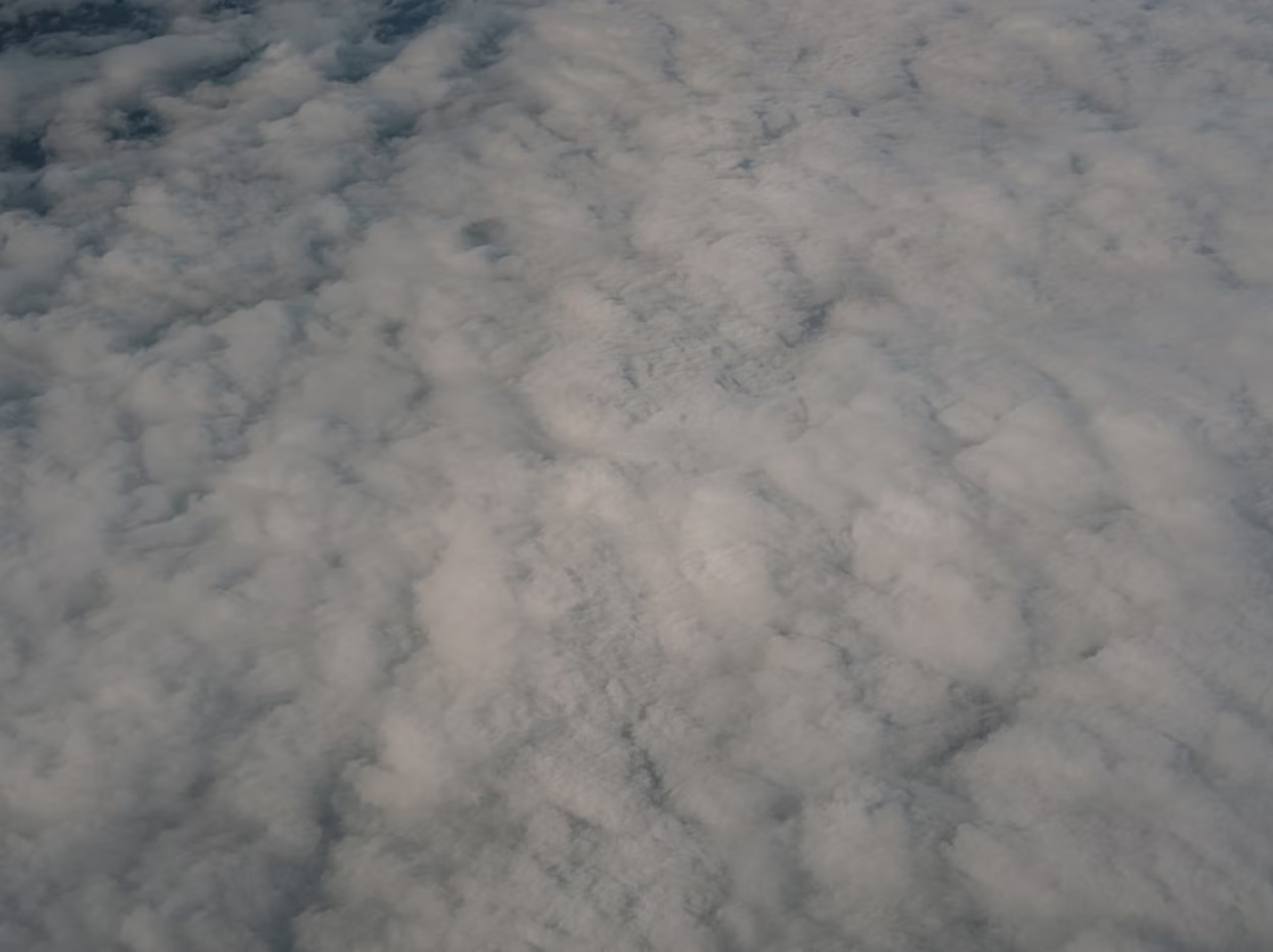
Author’s Note: This article is from my weekly “Top of Mind” email, sent to subscribers every Thursday. For more content like this and to receive the full newsletter each week, enter your name and email under “SIGN UP FOR OUR WEEKLY NEWSLETTER, ‘TOP OF MIND,’” located on the right-hand side of the site.
For decades, weather modification sat on the fringe of science, dismissed by the government and shrugged off by the public with a familiar refrain: “The government wouldn’t do that.” But it did, and it still does. And worse, American colleges and universities helped give China the tools to do it themselves.
Today, China operates the world’s largest weather modification program. It employs more than 37,000 personnel, regularly deploying rockets and aircraft to seed clouds, and has a growing research apparatus dedicated to climate control. In 2020, China’s State Council announced a dramatic expansion of the program, aiming to cover over two million square miles by 2025—that’s larger than India.
China has undoubtedly turned these ambitions into reality by tapping into American research through its ties with U.S. universities.
For some background, the first successful attempt to manipulate the weather was reportedly made in 1946, when General Electric chemist Vincent Schaefer induced snowfall using silver iodide. What began as a meteorological curiosity quickly sparked military interests. The U.S. government, working with private researchers, launched Project Cirrus in the 1950s to explore how storms could be weakened, redirected, or intensified.
True to form, government officials insisted none of this was happening. During the Vietnam War, Defense Secretary Melvin Laird told Congress the U.S. had no weather warfare programs, and the Nixon administration stood by the denial. However, by 1971, when information about Operation Popeye—a cloud seeding program over the Ho Chi Minh Trail to prolong the monsoon season and disrupt enemy logistics—was leaked, it was clear that weather engineering had found its battlefield application.
[RELATED: Trump Allows Chinese Students into U.S. Universities in Exchange for Rare Earth Minerals]
Alongside the military, American universities have been trailblazers in atmospheric and climate sciences since—at least—the 1960s. The University of Nevada, Reno, has spent decades seeding clouds to combat droughts and increase snowfall in the American West. And Cornell, Pennsylvania State University, and the University of California (UC) system remain global powerhouses in meteorology and atmospheric science. Meanwhile, Chinese students have flocked to U.S. STEM programs, particularly in the physical sciences, which encompass fields such as atmospheric science and meteorology. Specific enrollment numbers by discipline are hard to pin down, but Chinese nationals are the second-largest group of international students in U.S. STEM programs. Chinese foreign national students are not just hitting the books, however. It is well established that they’re keeping a close eye on American breakthroughs, especially those with dual-use potential, like, as Matthew Andersson suspects, weather engineering.
Andersson, a seasoned aerospace consultant and former airline CEO with experience in government and defense sectors, including advising on geoengineering risks—stints at Booz Allen Hamilton and Charles River Associates, plus U.S. Senate testimony on airspace policy—has tracked these developments with growing unease.
“The use of technologies to modify or influence meteorological phenomena has been a specific U.S. national program since World War II,” he says. From chemical seeding for rain to directed-energy tech that nudges jet streams, chemical agents to alter habitats, and even kinetic weapons to trigger oceanic or seismic events, it’s all tied to national security, making it a prime target for “foreign espionage.”
China has extracted a substantial amount of research from the United States—particularly through its ties to American universities. Andersson explains that much of the research on weather engineering flows through the U.S. R1 university system, which he describes as “a point of security vulnerability due to an absence or weakness of national security controls in the university system.” While it’s difficult to trace exactly what China has taken or how it has applied U.S. research, its academic partnerships with American institutions have been a goldmine for advancing its own scientific capabilities.
China extracts “any and all defense-related research within the U.S. university network, under the guise of academic research access and sharing, through faculty and graduate student appointments, as well as cyber espionage,” he warns. “This includes potential access to highly sensitive U.S. systems, organizations, and technology, which may include the increasing ability by China to undertake various forms of attack through domestic access to energy, telecommunications, transportation, and military systems.”
The UC system’s partnership with Tsinghua University—China’s hub for civil-military fusion—gives Chinese nationals access to research that can support military technology development. Given UC’s leadership in atmospheric science, the system likely serves as a key channel for transferring expertise in this area.
The California-China Climate Institute (CCCI), jointly run by UC Berkeley and Tsinghua, is another, and perhaps more concrete, example.
On paper, CCCI chases “climate change solutions.” In practice, it’s a pipeline for China to influence California’s policy apparatus. As Ian Oxnevad explains, Tsinghua’s research has shaped state regulations, its faculty cozy up to Sacramento agencies, and the institute helped broker Gavin Newsom’s 2023 climate deal with Beijing—a move that neatly sidesteps the Constitution’s ban on state-level treaties. With Assembly Bill 39 enshrining CCCI into California law, Tsinghua’s influence isn’t just academic; it’s institutional.
Then there’s the China Scholarship Council (CSC), which sponsors hundreds of Chinese graduate students at U.S. universities annually. The catch? Recipients must return to China—presumably to serve the state. Worse, Chinese law requires these same students to report to Chinese intelligence services while they are in America. A 2024 House committee investigation found CSC-funded students embedded in federally funded labs—Dartmouth, Temple, Notre Dame, and UC campuses—working on projects with clear national security implications.
Weather control is only a single front in China’s multi-pronged campaign of strategic exploitation.
House Republicans warn that American universities have become “Trojan horses for technology transfer,” accelerating China’s advances in artificial intelligence, semiconductors, and even nuclear weapons. University officials insist most Chinese students aren’t spies, but when the system funnels innovation straight to the Chinese Communist Party’s research ecosystem, motives are beside the point.
[RELATED: Eisenhower Warned Us]
But as for the weather, China’s ambitions to control it stretch far beyond drought relief.
Its “Sky River” project aims to capture water vapor from the Indian monsoon as it crosses the southern Tibetan Plateau and redirect it toward the arid Yellow River Basin in northern China. Government reports describe this as an “aerial corridor,” designed to deliver up to 10 billion cubic meters of rainfall annually across 1.6 million square kilometers, using tropospheric channels and hundreds of iodide-emitting chambers installed throughout the Qinghai–Tibet Plateau.
The project is alarming China’s neighbors, as atmospheric engineering could be used as a geopolitical tool, if not a weapon—the U.S. has demonstrated that weather engineering has military applications.
Nanjing University of Information Science & Technology and the Chinese Academy of Meteorological Sciences, which have ties to UW–Madison’s geoscience programs, are churning out atmospheric scientists. China denies militarizing this tech, but their growing ability to reshape the physical environment screams geopolitical ambition, and their track record doesn’t exactly inspire trust.
Given this, President Trump—no stranger to making U-turns—should reverse his recent proposal to grant Chinese students access to U.S. universities in exchange for rare earth minerals. He has both the power and the responsibility to reverse it—and he should. The U.S. pioneered weather modification; China scaled it up and now leads in forecasting. We can’t undo what we’ve already shared, but we can stop handing over the playbook. Weather engineering is real, powerful, and a growing strategic liability as China pulls ahead. It’s time for American universities—and political leaders—to stop playing lab partner with the CCP.
Follow Jared Gould on X.
Image by Lisha Riabinina on Unsplash

Florida airports are now required to report planes equipped to seed clouds, which is now illegal in Florida.
Maybe the recent floods in TX & NC weren”t caused by global warming.